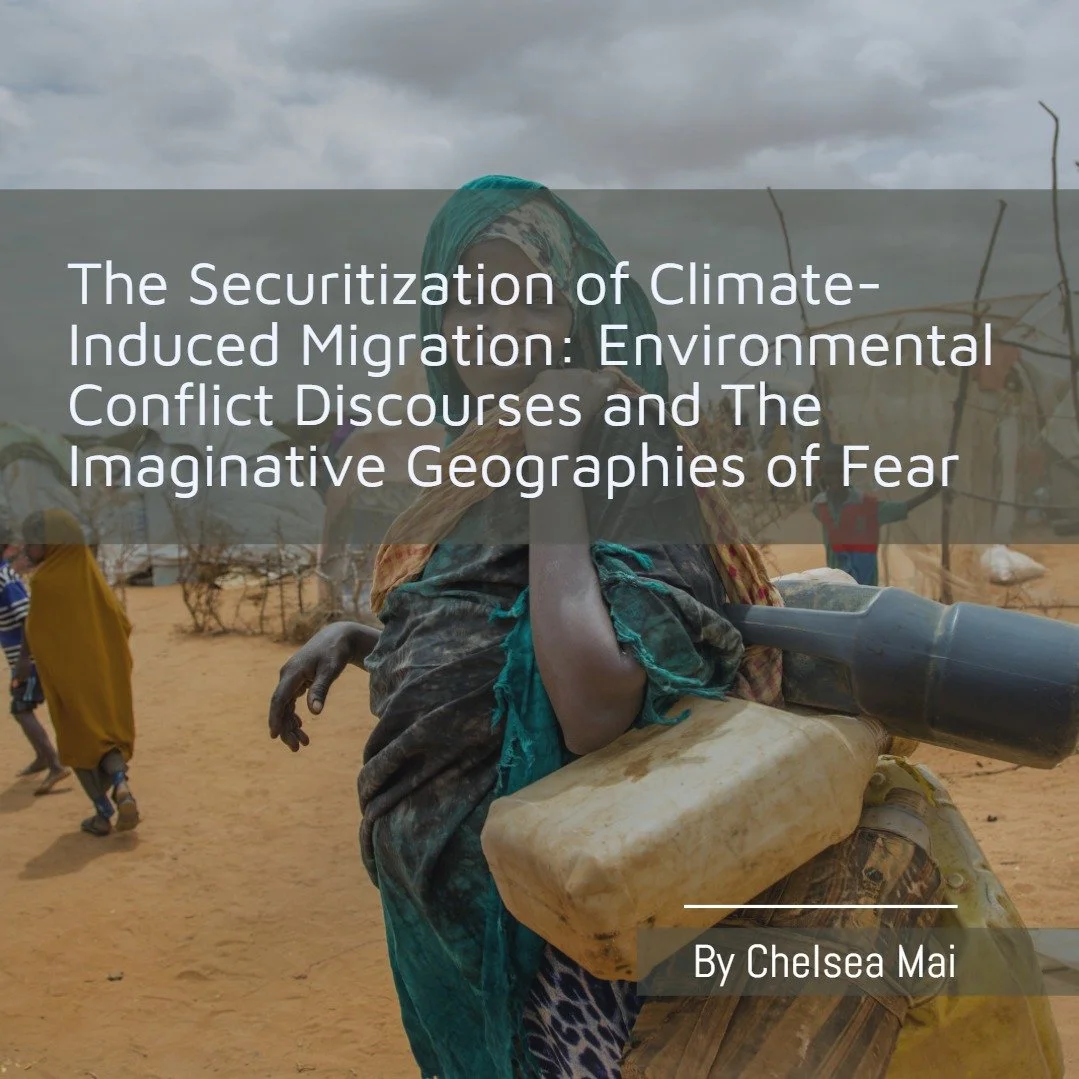Existential risk has become a growing field of scientific inquiry, as humanity's future on this planet seems increasingly insecure. This is due to a range of potential threats, including the rapid advancement of AI technology, climate change, and nuclear war.
The Meltdown: Nuclear Relations in the Arctic
This article assesses the impact of multipolarity on nuclear relations in the Arctic. Due to climate change, geopolitical tension, and the Russian invasion of Ukraine, nuclear relations in the Arctic are unstable and present serious security risks that cannot be contended with through the use of classic deterrence theory. Melting polar ice means growing competition for Arctic territory and resources amongst North Atlantic Treaty Organization (NATO) members, the Russian Federation, and China. This is occurring alongside the threat of nuclear warfare, which is considered by all actors to be a matter of deterrence despite it being beyond the bipolar rational choice modelling of deterrence theory.
Gas, War and Europe (II): A Not-so-clear Future
The second part of the series “Gas, War and Europe” looks at the latest developments on the energy crisis triggered by the War in Ukraine, its current impact in Europe and the possible future scenarios. For this, the article delves into the institutional response given by the European Union (EU), the evolution of imports and energy suppliers as well as the challenges ahead.
Gas, War, and Europe: (I) The Announced Energy Crisis
This first part of the series “Gas, War, and Europe” aims to analyse the different factors that have shaped the longstanding dependency of the European Union (EU) on Russian gas, and how these have laid the foundations for the energy crisis triggered by the war in Ukraine. For this, the spotlight is placed on the interdependence of economic, political, and infrastructural issues as the main factors capable of explaining the current situation.
Can Australia be the new “global critical minerals powerhouse” by 2030?
Critical minerals are important as they are essential in the construction of sustainable energy technologies that will be necessary to achieve net-zero emissions by 2050. Australia is developing towards becoming an integral part of the international critical minerals supply chain. But to become one of the main suppliers of critical minerals Australia needs to attract investments and challenge China’s dominant position in the downstream of critical minerals.
Land Without Law: The Effects Of Amazon Deforestation On Brazil’s National Security
Discourse constructed by the Brazilian military dictatorship framed deforestation as a tool to secure the nation and develop the Amazon region. This strategy has been revived by the current government of Jair Bolsonaro, despite its discordance with both the Brazilian population’s own perception of security and with Brazilian law, which defines unauthorised deforestation as a crime. The non-compliance of environmental norms produce manifold negative consequences not only for Brazilian society but also for the state, as it weakens the authority of legal institutions and may compromise positive diplomatic relations with other nations. Furthermore, in contrast to the governmental narratives, the destruction of the forest for cattle breeding and agricultural fields, in reality, does not generate profitable economic consequences for the Brazilian state and does not accelerate development in the Amazon region.
Why we need more climate security and less climate securitization: the case of Kyrgyzstan
The UN Framework Convention on Climate Change, signed in 1992, marked a milestone when climate change concerns were raised globally, and the UN became a powerful speech actor securitizing climate change. In 2007, the UNSC debate on the international security implications of climate change focused on the threat of climate-related conflicts [1][2]. However, military and political institutions constantly frame climate change as a threat to national security and a priority for foreign policy [3] as well as a catalyst for future conflicts [4]. These narratives of danger are caused by the securitization of the environment had shaped policies, favouring technocratic solutions and development interventions in so-called climate hotspots.
The Environmental Cost of the Future
Technology stands at the centre of human development. With it comes numerous problems, including how humanity has changed and continues to change its environment. This article explores some of the problems surrounding energy security, specifically those associated with Industry 4.0 (the fourth industrial revolution) as well as the field of Artificial Intelligence and Machine Learning (AI/ML). While there are few definitive solutions to the problems created by improving old technologies and implementing new ones, change is dependent on sparking conversations about sustainability and ultimately the type of future humanity chooses to create for itself.
The Securitization of Climate Induced Migration: Environmental Conflict Discourses and The Imaginative Geographies of Fear
The nexus between Climate Change and security has obtained much relevance in the 21st century. Climate Change is perceived to be a source of insecurity that has the potential to exacerbate existing security threats. Climate Change is thus viewed as a ‘threat multiplier’ and a source that can induce violent conflicts when viewed through the lens of Environmental Conflict Discourses. Environmental Conflict Discourses (ECD) link traditional security concerns to the environment. ECD prioritizes the security of the state over the human populations engaging in conflict and also identifies migration as a trend that can aggravate environmentally induced conflict. ECD asserts that groups within society will likely engage in conflict once natural resources deplete due to environmental degradation. Resource scarcity and the conflict that ensues because of climate induced environmental degradation may force people to move across borders and become potential ‘Climate Refugees’. ECDs however, lack widespread empirical evidence to support the claim of a direct causal link between Climate Change, conflict and migration. It can be argued that ECDs have played a more substantial role in the imaginative geographies of fear about climate refugees which have informed policies to securitize Climate Induced Migration (CIM).










